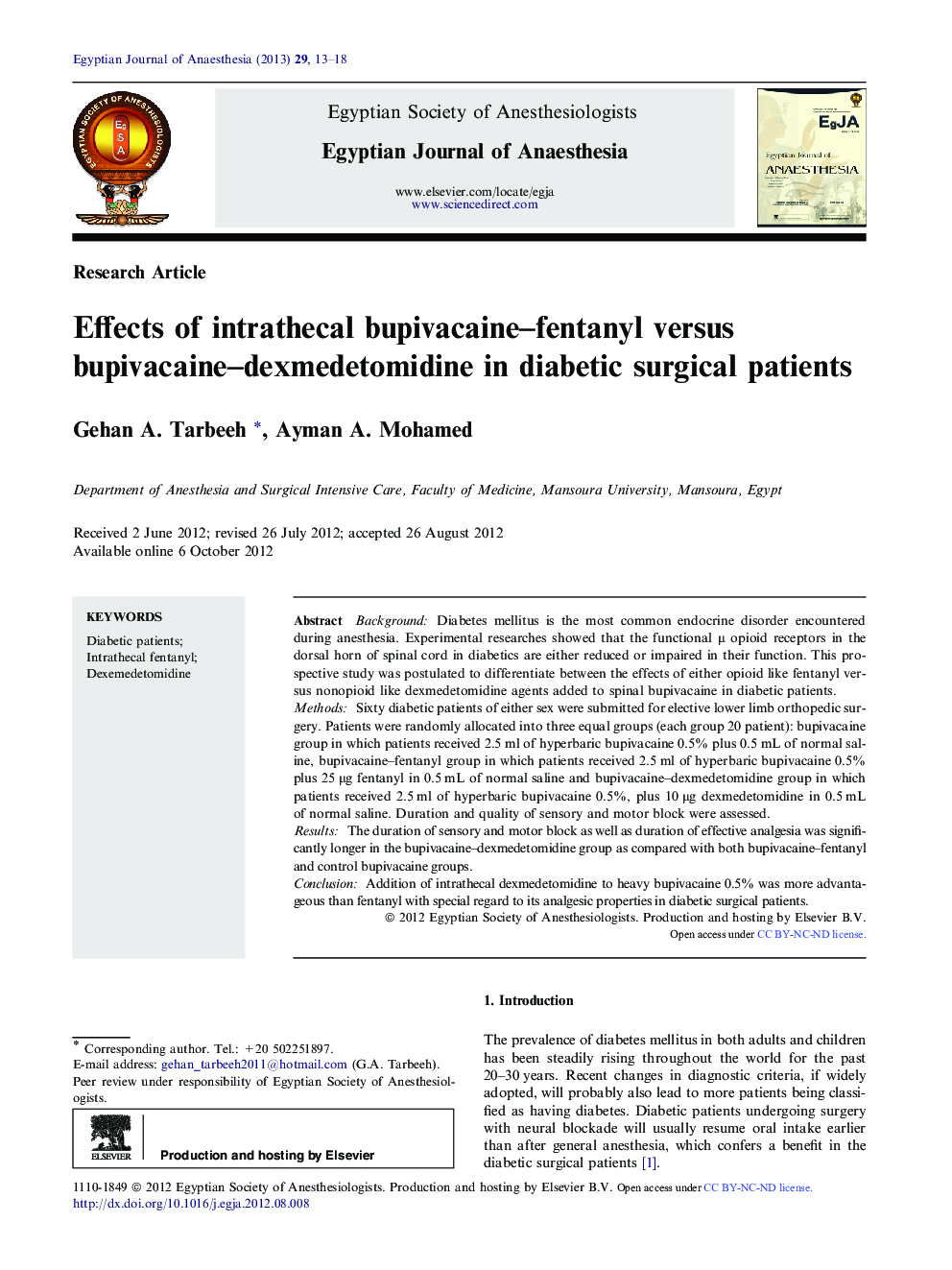| Article ID | Journal | Published Year | Pages | File Type |
|---|---|---|---|---|
| 2756396 | Egyptian Journal of Anaesthesia | 2013 | 6 Pages |
BackgroundDiabetes mellitus is the most common endocrine disorder encountered during anesthesia. Experimental researches showed that the functional μ opioid receptors in the dorsal horn of spinal cord in diabetics are either reduced or impaired in their function. This prospective study was postulated to differentiate between the effects of either opioid like fentanyl versus nonopioid like dexmedetomidine agents added to spinal bupivacaine in diabetic patients.MethodsSixty diabetic patients of either sex were submitted for elective lower limb orthopedic surgery. Patients were randomly allocated into three equal groups (each group 20 patient): bupivacaine group in which patients received 2.5 ml of hyperbaric bupivacaine 0.5% plus 0.5 mL of normal saline, bupivacaine–fentanyl group in which patients received 2.5 ml of hyperbaric bupivacaine 0.5% plus 25 μg fentanyl in 0.5 mL of normal saline and bupivacaine–dexmedetomidine group in which patients received 2.5 ml of hyperbaric bupivacaine 0.5%, plus 10 μg dexmedetomidine in 0.5 mL of normal saline. Duration and quality of sensory and motor block were assessed.ResultsThe duration of sensory and motor block as well as duration of effective analgesia was significantly longer in the bupivacaine–dexmedetomidine group as compared with both bupivacaine–fentanyl and control bupivacaine groups.ConclusionAddition of intrathecal dexmedetomidine to heavy bupivacaine 0.5% was more advantageous than fentanyl with special regard to its analgesic properties in diabetic surgical patients.
